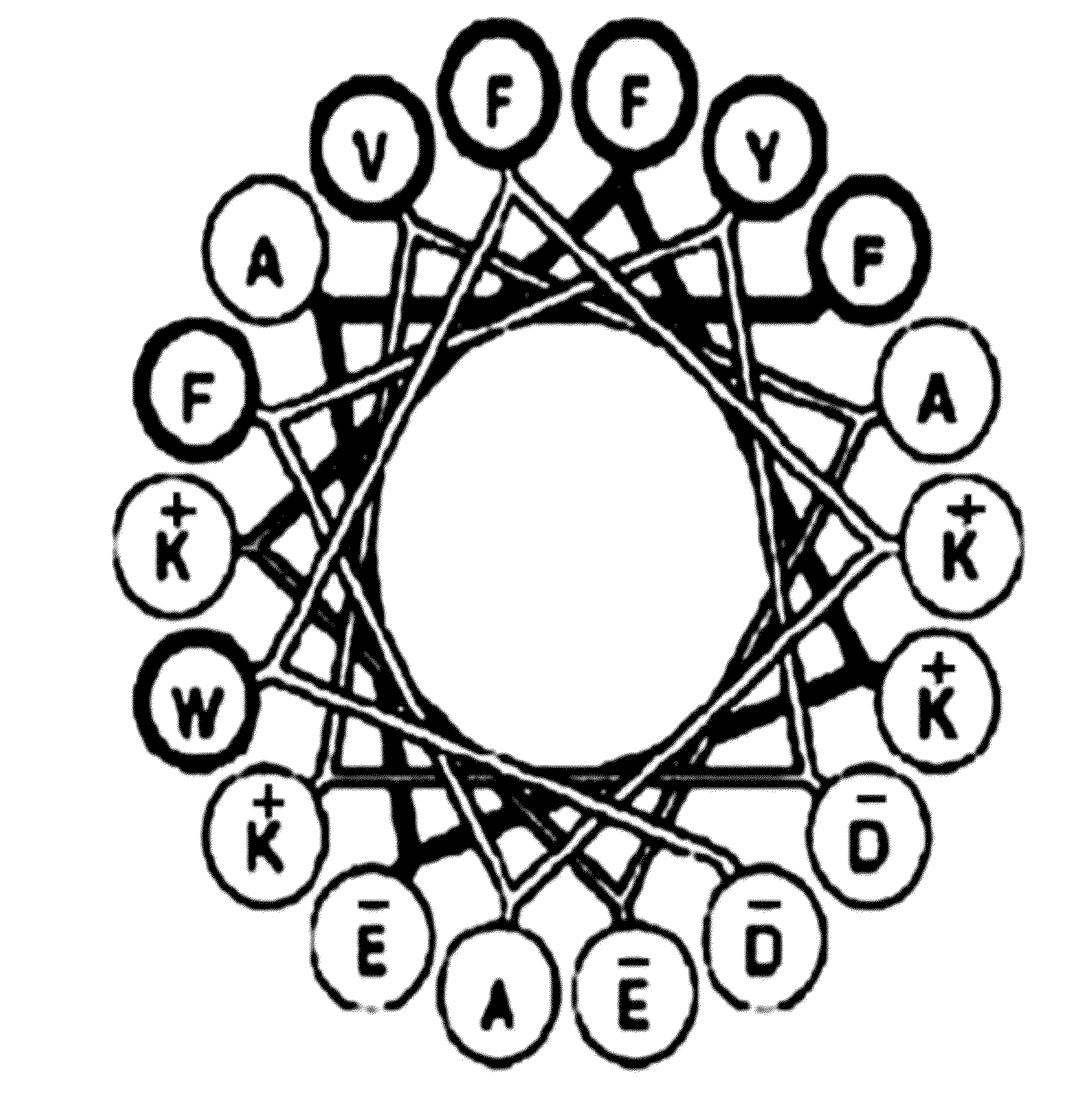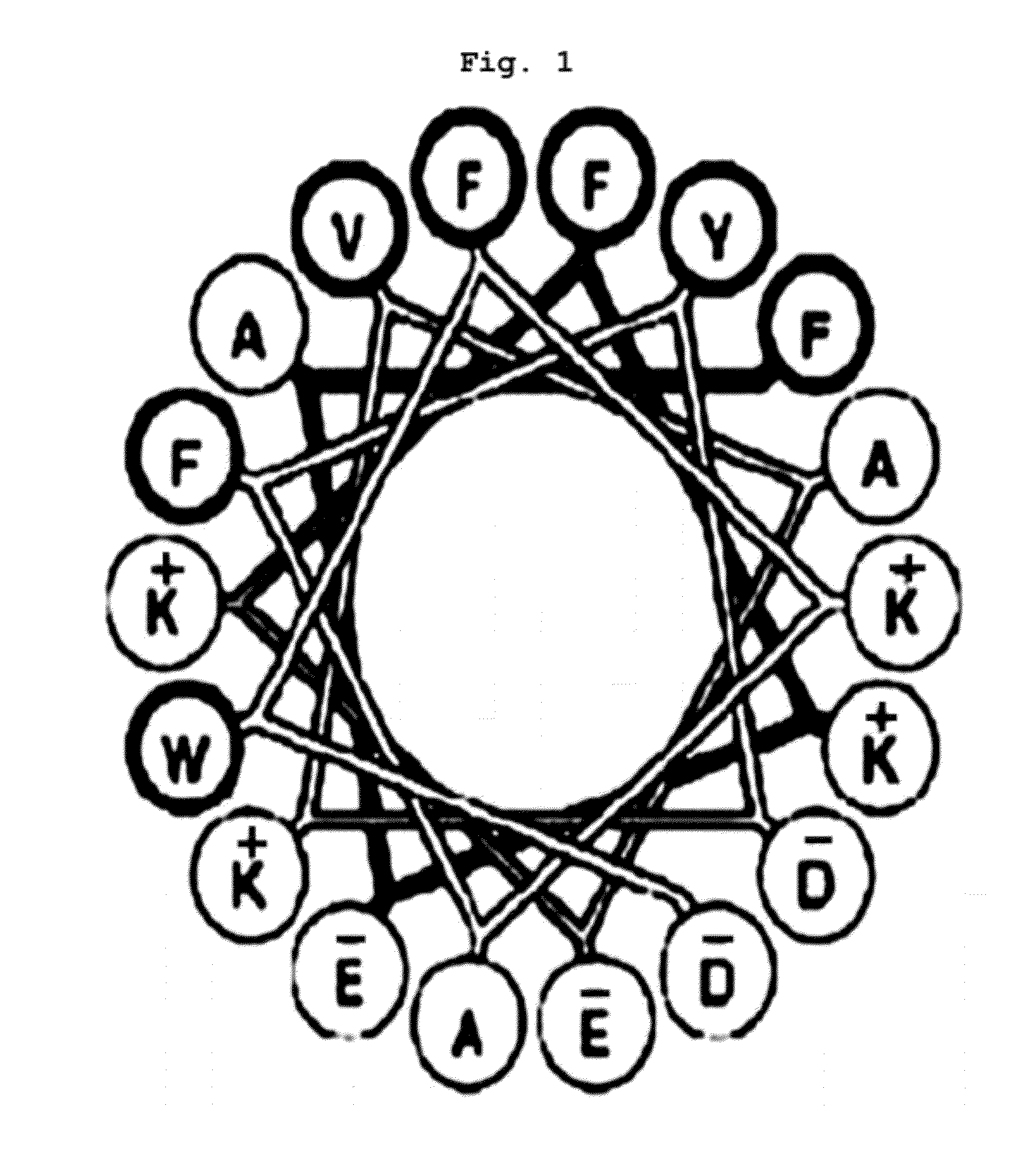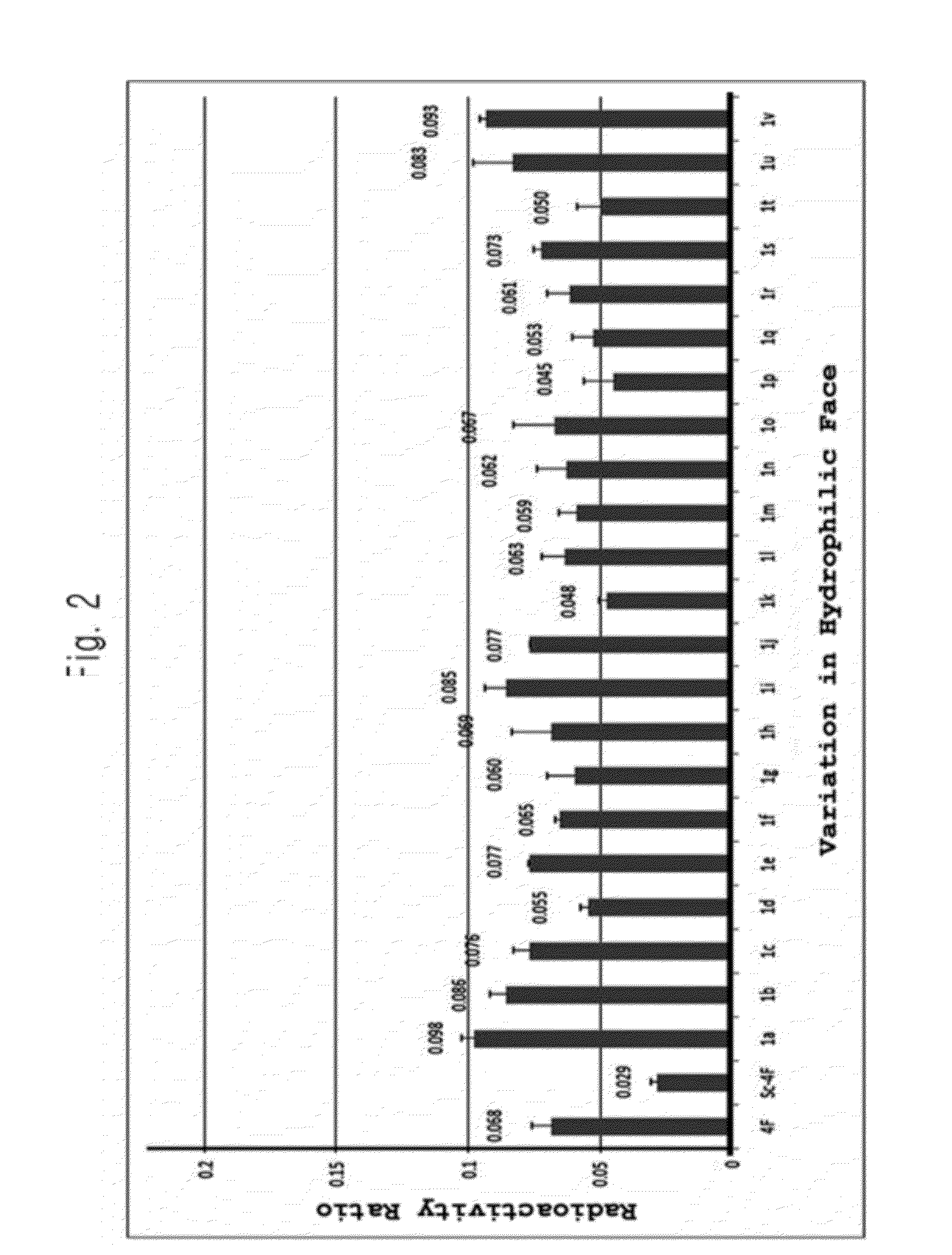Apolipoprotein a-1 mimic peptides, and therapeutic agent for treating hyperlipidemia and diseases related to hyperlipidemia comprising same
a technology of apolipoprotein and a-1, which is applied in the direction of peptides, drug compositions, metabolic disorders, etc., can solve the problems of increased risk of serious complications, failure of cetp inhibitors of pfizer pharmaceuticals clinical trials, and increased risk of coronary artery disease and heart attack, so as to improve the ability to recognize lipids, increase high density lipoprotein, and improve the effect of cholesterol efflux
- Summary
- Abstract
- Description
- Claims
- Application Information
AI Technical Summary
Benefits of technology
Problems solved by technology
Method used
Image
Examples
example 1
[0088] Synthesis of Peptide
[0089]Peptide synthesis was performed by well-informed Fmoc solid phase peptide synthesis method. Fifty mg (0.064 mmol) of Rink Amide resin (Novabiochem) was placed in a vessel, to which 1 ml of methylene chloride was added to inflate thereof. The mixture was inflated by adding 1 ml of DMF (dimethylformamide) for 5 minutes. Deprotection of the resin was performed using 1 ml of 20% piperidine (in DMF) for 5 minutes (three times), followed by washing with 1 ml of DMF five times. Six equivalents of the Fmoc-deprotected amino acid was reacted with a solution containing six equivalents (198 mg) of each PyBop [(benzotriazol-1-yloxy)tripyrrolidinophosphonium hexafluorophosphate] and DIPEA (diisopropylethylamine) for at least 60 minutes. Upon completion of the reaction, the reactant was washed with 1 ml of DMF three times. TNBS test was performed to confirm whether the reaction was successfully done. Particularly, one drop of 10% DIPEA ...
example 2
Analysis of the Cholesterol Efflux Level by Apo A-I Mimic Peptides
[0093]In order to screen which of the peptide synthesized from Example 1 mimics the Apo A-I, cholesterol efflux assay was performed by treating the macrophage cell line with the peptides. In particular, DMEM (Dulbecco's Modified Eagle medium) containing penicillin-streptomycin and 10% FBS (Fetal Bovine Serum) was used as the cell culture medium. Macrophage cell was plated on the 24-well culture plate at the density of 5×104 cells numbers per well and then incubated for 24 hr at 37° C. with 5% CO2. The cell culture medium was replaced with 0.3 ml of fresh DMEM medium containing penicillin-streptomycin and 10% LPDS (Lipoprotein deficient serum) and then incubated for 12-16 hr at 37° C. with 5% CO2. After the incubation, the cell culture medium was removed and the macrophage cells were washed by adding 1×PBS (phosphate buffered saline) and shaking. Next, 0.3 ml of subculture medium containing 1 μCi / ml of 3H-labeled chole...
example 3
Analyzing the Recognition Between the Apo-I Mimic Peptide and the Hydrophobic Molecule
[0095] Preparation of Large Unilamellar Vesicles (LUVs)
[0096]Total 10 mg of lipid compound was prepared by mixing phosphatidylcholine (soybean) and the LUVs containing cholesterol at 0%, 10%, 20%, 30% and 40%. The lipid compound was dissolved in 2 mL of solution containing 2:1 volumes of chloroform and methanol. The solvent is removed by using distillation condensation device and yielding a thin lipid film in the flask. The lipid film is hydrated by adding 1 mL of tertiary distilled water. Liposomes of the same size were generated by extruding the solution through a 0.2 polycarbonate filter for 5 times, and 0.1 μm polycarbonate filter for 5 times using a cylinder fitted with a high pressure regulator. The amount of cholesterol contained in the liposome was measured by using cholesterol Lab-assay kit.
[0097] Tryptophan Fluorescence Measurement
[0098]Fluorescence Anisotropy was measured using AMINCO-Bo...
PUM
| Property | Measurement | Unit |
|---|---|---|
| concentration | aaaaa | aaaaa |
| concentration | aaaaa | aaaaa |
| detection wavelength | aaaaa | aaaaa |
Abstract
Description
Claims
Application Information
 Login to View More
Login to View More - R&D
- Intellectual Property
- Life Sciences
- Materials
- Tech Scout
- Unparalleled Data Quality
- Higher Quality Content
- 60% Fewer Hallucinations
Browse by: Latest US Patents, China's latest patents, Technical Efficacy Thesaurus, Application Domain, Technology Topic, Popular Technical Reports.
© 2025 PatSnap. All rights reserved.Legal|Privacy policy|Modern Slavery Act Transparency Statement|Sitemap|About US| Contact US: help@patsnap.com



